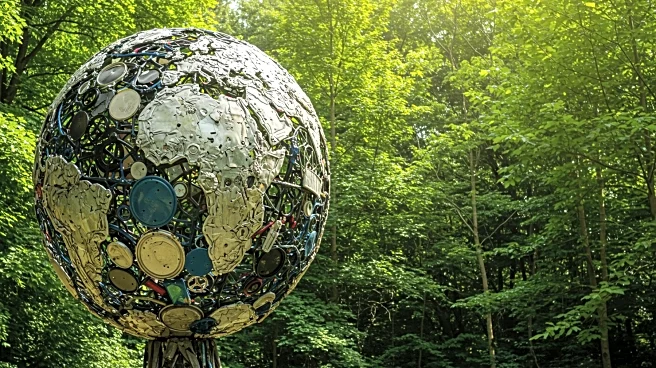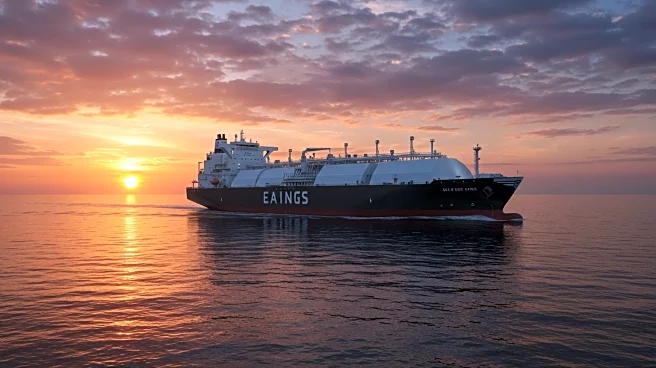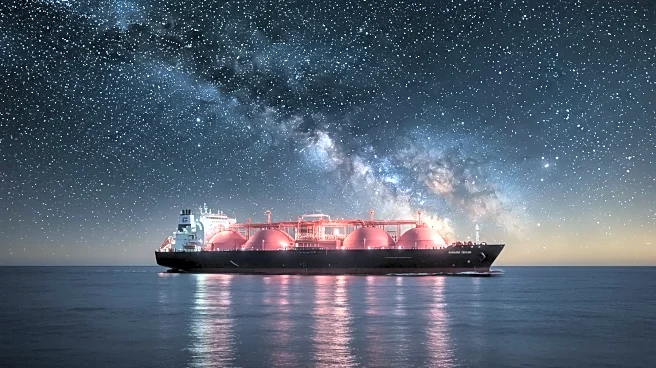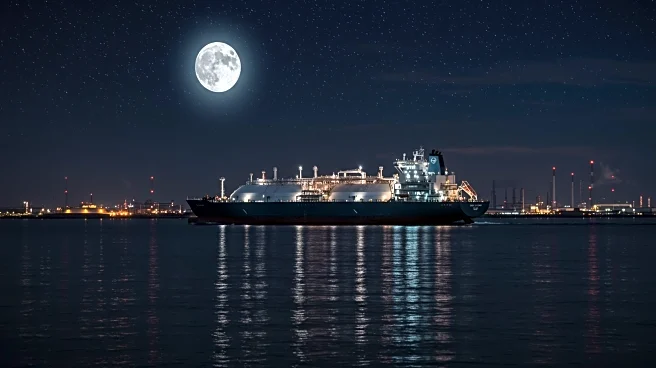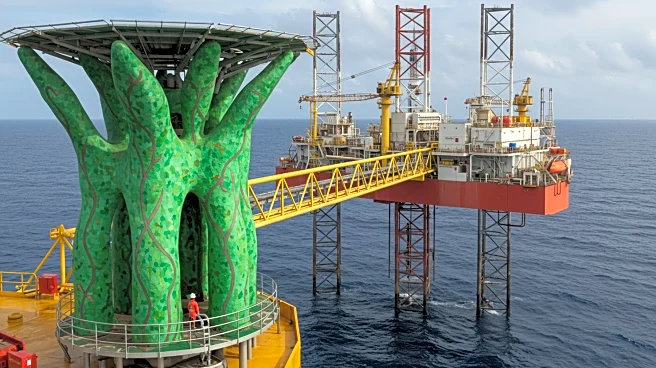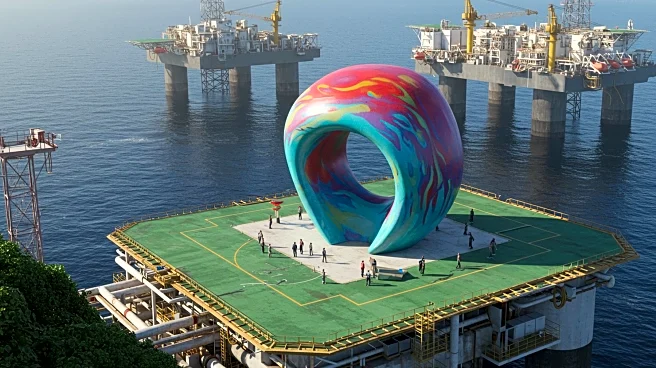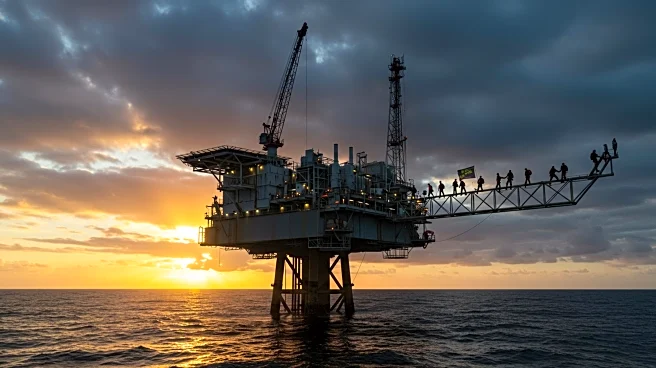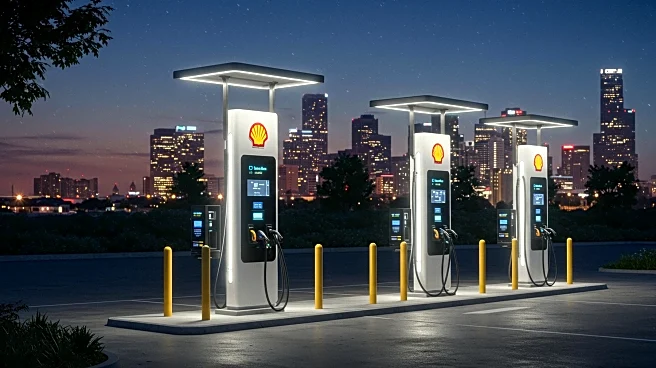What's Happening?
Sculptor Sir Anish Kapoor, in collaboration with Greenpeace UK, has completed an unauthorized art installation on a platform in the North Sea. The installation, titled 'Butchered,' is the first piece of fine art to debut on an offshore oil and gas structure. Greenpeace UK facilitated the installation without permission from the platform's owner, Shell, by mobilizing a team to assemble a large canvas and aluminum frame on the Skiff wellhead platform. The artwork was completed by spraying 250 gallons of food-based nontoxic dye onto the canvas, conveying an activist message related to carbon emissions and the oil and gas industry.
Why It's Important?
This installation highlights the ongoing tension between environmental activists and the oil and gas industry. By choosing an offshore platform as the site for the artwork, Kapoor and Greenpeace aim to draw attention to the environmental impact of fossil fuel extraction. The unauthorized nature of the installation raises questions about the legality and safety of such actions, as Shell has expressed concerns over the potential risks involved. The event underscores the growing use of art as a medium for environmental activism, potentially influencing public perception and policy discussions around carbon emissions and energy production.
What's Next?
Shell has not commented on the artistic message but has raised concerns about the safety and legality of the installation. It is likely that legal actions could be pursued against Greenpeace for trespassing and violating safety zones. The incident may prompt further dialogue between environmental groups and the oil industry, potentially leading to increased scrutiny of offshore operations. Additionally, the artwork could inspire similar activist-driven art installations, furthering the conversation on environmental issues.
Beyond the Headlines
The installation raises ethical questions about the use of unauthorized methods to convey activist messages. It challenges traditional boundaries between art and activism, potentially setting a precedent for future actions. The choice of location—a platform associated with fossil fuel extraction—serves as a powerful symbol of the environmental critique, highlighting the role of art in shaping public discourse on climate change.


